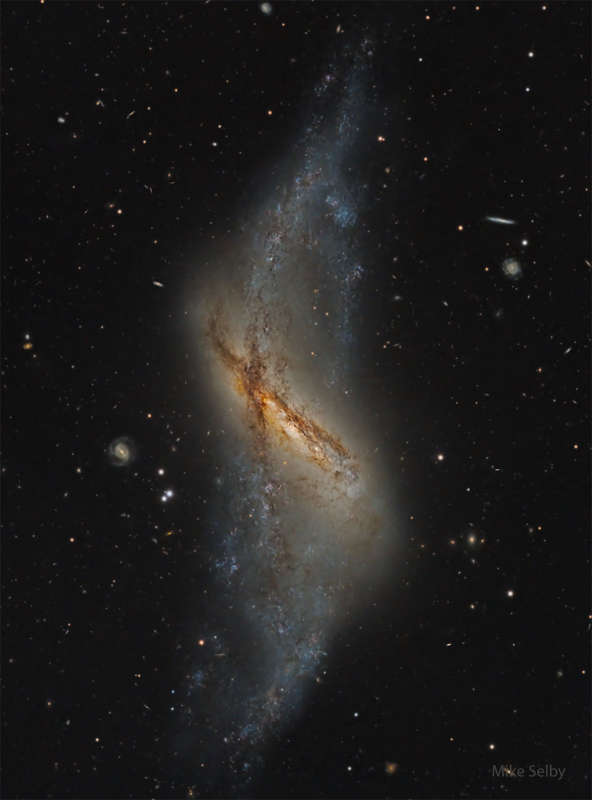
|
Credit & Copyright: Mike Selby
Explanation:
What kind of strange galaxy is this?
This rare structure is known as a
polar ring galaxy, and it seems to have two different rings of stars.
In this galaxy,
NGC 660, one ring of bright stars,
gas, and dark dust appears nearly vertical,
while another similar but shorter ring runs diagonally from the upper left.
How polar ring galaxies
obtain their striking appearance remains a
topic of research, but a leading theory
holds that it is usually the result of two galaxies
with different central ring planes
colliding.
NGC 660 spans about 50,000 light years and is located about 40 million
light years
away toward the constellation of the Fish
(Pisces).
The
featured
image was captured recently from
Observatorio El Sauce in
Chile.
|
January February March April May June July August September October November December |
| |||||||||||||||||||||||||||||||||||||||||||||||||||||||
NASA Web Site Statements, Warnings, and Disclaimers
NASA Official: Jay Norris. Specific rights apply.
A service of: LHEA at NASA / GSFC
& Michigan Tech. U.
Based on Astronomy Picture
Of the Day
Publications with keywords: galaxies - polar ring
Publications with words: galaxies - polar ring
See also:
- APOD: 2025 August 28 B Galaxies, Stars, and Dust
- APOD: 2025 July 14 B NGC 2685: The Helix Galaxy
- APOD: 2025 March 2 B The Hubble Ultra Deep Field in Light and Sound
- APOD: 2024 December 31 B The Twisted Disk of NGC 4753
- Stellar Streams in the Local Universe
- APOD: 2024 April 15 B The Cigar Galaxy from Hubble and Webb
- APOD: 2024 March 20 B The Eyes in Markarians Galaxy Chain
